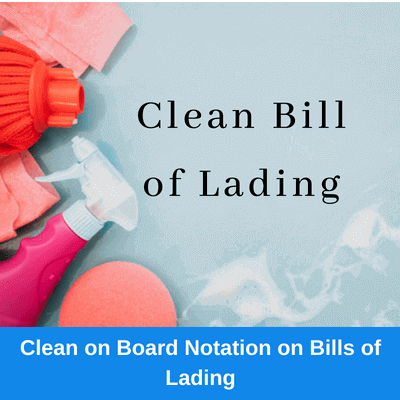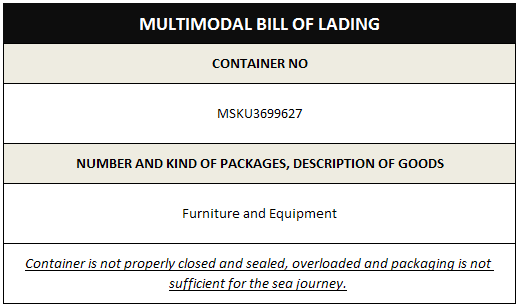What is clean on board?
A clean transport document or a “clean on board” clause relates to the condition of the goods and/or packaging.
If, on receipt of the goods, the carrier finds that the packaging or the goods are defective, he will make a notation on the transport document to this effect to avoid being subsequently held responsible for such defect.
Hence, the document is no longer clean, and any objections or claims for damages will have to be directed to the consignor. (1)
If the word “clean” appears on a bill of lading and subsequently it has been deleted, the bill of lading will not be deemed to be claused or unclean unless it specifically bears a clause or notation declaring that the goods or packaging are defective.
Clauses or notations on the bills of lading, which expressly declare a defective condition of the goods or packaging are not acceptable by the letter of credit rules.
Clauses or notations which do not expressly declare a defective condition of the goods or packaging (e.g., “packaging may not be sufficient for the sea journey”) do not constitute a discrepancy.
However, a statement on the transport document declaring that the packaging “is not sufficient for the sea journey” would not be acceptable.
One of my reader is asking below question from Belgium. She is director of a shipping company. She would like to know more about clean on board notations on bills of lading.
We have a persistent shipper who insists to have the word ‘clean’ added before shipped on board in their B/Ls. Have tried to explain that a B/L without clauses/remarks is a clean B/L. Can you refer to a certain part on your website where I can find official explication to convince them ?
Thanks in advance.
director of XYZ Shipping Company
Dear Director,
I can suggest you to inform below UCP 600 article to your shipper.
UCP 600 – Article 27
Clean Transport Document
A bank will only accept a clean transport document. A clean transport document is one bearing no clause or notation expressly declaring a defective condition of the goods or their packaging. The word “clean” need not appear on a transport document, even if a credit has a requirement for that transport document to be “clean on board”.
UCP 600 defines below documents as transport documents :
- Transport Document Covering at Least Two Different Modes of Transport
- Bill of Lading
- Non-Negotiable Sea Waybill
- Charter Party Bill of Lading
- Air Transport Document
- Road, Rail or Inland Waterway Transport Documents
- Courier Receipt, Post Receipt or Certificate of Posting
References:
- Documentary credits in practice, Reinhard Längerich, Second edition – 2009, Published by: Nordea, Page: 146
- Shipping and Incoterms, Practice Guide, UNDP Practice Series, Page:12



